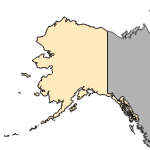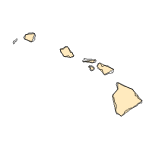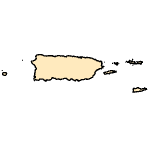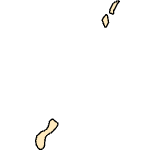Stephanella hina
(Japanese moss animal)
Bryozoans
Exotic |
|
Common name: Japanese moss animal
Native Range: Stephanella hina has a native range restricted to Japan and Korea (Rao 1992).



|

Alaska |

Hawaii |

Puerto Rico &
Virgin Islands |

Guam Saipan |
Hydrologic Unit Codes (HUCs) Explained
Interactive maps: Point Distribution Maps
Nonindigenous Occurrences:
Table 1. States with nonindigenous occurrences, the earliest and latest observations in each state, and the tally and names of HUCs with observations†. Names and dates are hyperlinked to their relevant specimen records. The list of references for all nonindigenous occurrences of Stephanella hina are found here.
Table last updated 1/11/2026
† Populations may not be currently present.
Means of Introduction: Unknown.
Status: Established in all locations it has been collected.
Impact of Introduction: The impacts of this species are currently unknown, as no studies have been done to determine how it has affected ecosystems in the invaded range. The absence of data does not equate to lack of effects. It does, however, mean that research is required to evaluate effects before conclusions can be made.
References: (click for full references)
Marsh, T., and T. S. Wood. 2002. Results of a freshwater bryozoan survey in the Pacific Northwestern United States, Pages 207-214 in Bryozoan Studies 2001, Wyse Jackson, D. P., C. J. Buttler, and M. S. Jones, eds., Balkema Publishers, Rotterdam, Netherlands.
Rao, K.S. 1992. Fresh Water Ecology: Bryozoa. Anmol Publications, New Delhi. 75pp.
Smith, D.G. 1988.
Stephanella hina (Ectoprocta:Phylactolaemata) in North America, with notes on its morphology and systematics. Journal of the North American Benthological Society 7(3): 253-259.
Author:
Cannister, M., and A.J. Benson
Revision Date: 8/14/2019
Citation Information:
Cannister, M., and A.J. Benson, 2026, Stephanella hina Oka, 1908: U.S. Geological Survey, Nonindigenous Aquatic Species Database, Gainesville, FL, https://nas.er.usgs.gov/queries/FactSheet.aspx?SpeciesID=2334, Revision Date: 8/14/2019, Access Date: 1/12/2026
This information is preliminary or provisional and is subject to revision. It is being provided to meet the need for timely best science. The information has not received final approval by the U.S. Geological Survey (USGS) and is provided on the condition that neither the USGS nor the U.S. Government shall be held liable for any damages resulting from the authorized or unauthorized use of the information.